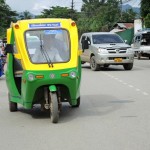Laos pins economic hopes on extra electricity

As Southeast Asia’s energy demands grow, Laos is banking on increased electricity exports to shore up its economy. The tiny country, which has a population of just under 7 million, has been opening a string of large-scale hydropower stations that will boost its total generation capacity by an estimated 70% by the end of the year compared to 2014.

